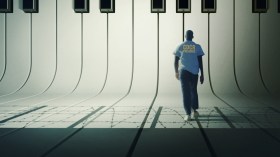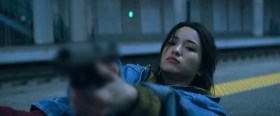At a time when local television seems more ephemeral than ever, there’s still a market for reminding people of the duds and flops of yesteryear. And if Mitch McTaggart’s The Back Side of Television was simply about mocking 70s-era Australian detergent commercials’ unhealthy fascination with lemons, it’d still be a worthwhile addition to the schedule.
But McTaggart, best known for his yearly overview of Australian programming The Last Year of Television, is a knowledgeable, likeable, and extremely funny host. His rummage around in the medium’s back closet is thought-provoking viewing guided by the kind of sharp and insightful intelligence we rarely associate with Australian television critics.
Previous seasons have served up everything from a look at the generational dumbing-down of television news to an extended takedown of Play School – or at least, the ruthless attitude the show’s producers have taken towards every other attempt to create educational television for children.
The Back Side of Television: wide-ranging
This long-awaited third season continues this wide-ranging approach. More confident than ever that audiences can handle pretty much anything so long as it’s interesting, a single episode can cover everything from Nine faking live news crosses (seems helicopter fuel is expensive) to Australia’s long-forgotten take on Twilight Zone (titled The Evil Touch) complete with time-travelling sex robot. Yes, there’s an overview of 80s nuclear war dramas and yes, undiluted nightmare fuel Threads does get a mention.
Watch The Back Side of Television Season 3 trailer.
A lot of the comedy comes from the throwaway mentions of various duds. If you’ve been waiting for someone to mention short-lived ‘comedy’ Let Loose Live, this is the show for you. And Australian television is more than capable of getting big laughs simply by existing: being reminded of Man O Man is funny enough without also being reminded that for a brief, glorious instant it beat sacred cow Hey Hey It’s Saturday in the ratings.
Where a lesser version of this series would simply be content to serve up the weird and wonderful highlights of yesteryear – and there is plenty of that here, including a determinedly boob-focused 80s special titled The Australian Way – The Back Side of Television isn’t merely a nostalgia show.

Rather than being sneeringly dismissive or openly mocking (at least, not all the time), McTaggart pays Australian television the dubious respect of taking it seriously.
Scattered between the more obviously funny segments are ones tackling systemic problems, like the way commercial television buried a major government report in the 70s because it would have undermined their advertisers, or how paid interviews with accident survivors only translate to ratings gold if the person was literally trapped under something.
The big stand-out here is a look at the way the police in this country have used television to promote themselves spread over two episodes. Part one focuses on drama, including how scripted series were used to defuse or deny real-life police controversies – just retell the story making the police the real victims! – while the second episode looks at the rise of reality television and, surprise surprise, Border Force really is as scummy as you’ve always suspected.
These episodes are both an eye-opening examination of the way propaganda is beamed directly into our homes, and a depressing reminder that scripted drama has all but vanished from the commercial networks. The police can’t use Blue Heelers to make us like them today because shows like Blue Heelers don’t exist.
The Back Side of Television: cultural
McTaggart’s interest in television, aside from a source of cheap jokes, is cultural. The reason why so much of the television here is decades old isn’t because nostalgia is a great way to lure in viewers (as a segment makes clear); it’s because that’s when television actually had real cultural power in this country.
The picture that builds over this series is of a golden age of television where truly terrible shows could make it to air because networks were willing to be creative and try new things, even if they often had no idea what they were doing beyond sucking up to advertisers and treating viewers like sex-obsessed cavemen.
At least we still have The Back Side of Television to provide us with archival footage of a dog taking a dump on a live television show, which then returned with even more dogs a few weeks later in the hope they’d do it again.
Maybe the decline of Australian television has an upside after all.





